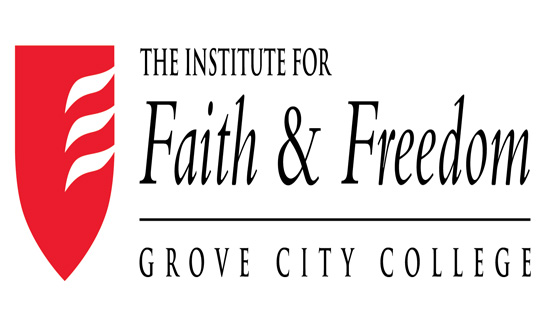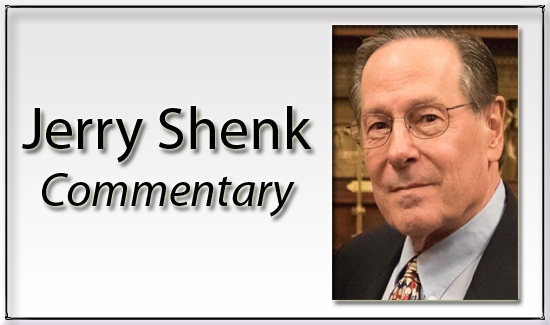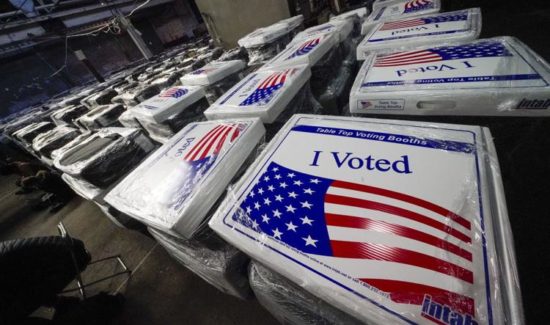Nine Justices Preserve Trump’s Ballot Status

Trump v. Anderson has been decided by a unanimous U.S. Supreme Court on the question of whether the Supreme Court of Colorado erred in requiring GOP presidential candidate Donald Trump to be excluded from the primary ballot. The Supreme Court, in a 9–0 per curiam opinion, ruled that the Colorado court was wrong and that Trump’s name should not be removed from the ballot.
The case against Trump was based upon a petition filed by certain Colorado voters maintaining that Trump’s actions following the 2020 presidential election amounted to “engag[ing] in insurrection.” They argued that his name ought to be prevented from appearing on the Colorado ballot because under Section 3 of the 14th Amendment, he had already disqualified himself from holding office. Historically, that provision was aimed at former officeholders who had sworn allegiance to the United States Constitution, later joined the Confederacy in its rebellion during the American Civil War, but then sought to hold office once again following the end of hostilities.
The opinion’s key holding, on which all nine justices agreed, is based upon the recognition that the 14th Amendment, in certain respects, “expand[ed] federal power at the expense of state autonomy.” One such case is found in Section 5 of the amendment, stating that Congress alone is given “power to enforce” the “provisions” of that amendment, including Section 3. Though “States may disqualify persons” from “holding … state office,” the states, says the court, “have no power under the Constitution to enforce Section 3 with respect to federal offices, especially the Presidency.”
To allow individual states to enforce Section 3 would open up the elective process to what the court calls a “patchwork” of varying standards and the possibility that a “candidate would be declared ineligible in some States, but not others.” That would be destabilizing enough, but, as the opinion points out:
The disruption would be all the more acute—and could nullify the votes of millions and change the election results—if Section 3 enforcement were attempted after the Nation had voted. Nothing in the Constitution requires that we endure such chaos—arriving at any time or different times, up to and perhaps beyond Inauguration.
Throughout the opinion, the court stresses that it is up to Congress, under Section 5, to pass legislation to enforce Section 3. Congress “enjoys power to enforce the [14th] Amendment,” which “grants new power to Congress to enforce the provisions of the Amendment against the States.” In other words, the U.S. Congress is the enforcing entity that is given power to act legislatively to set out standards and processes by which Section 3 disqualification can occur. The per curiam opinion’s insistence on congressional action caused four justices, three liberals and one conservative, to write concurring opinions. Note that this did not destroy the unanimity on the fundamental holding of the case — Colorado cannot pursue Section 3 disqualification for federal offices.
Justice Amy Coney Barrett provided a very short concurrence saying that the court should have shown more judicial restraint. Once it had found that state governments had no power to enforce Section 3, that determination was enough to decide the case.
The three liberal justices who filed concurrences (Sonia Sotomayor, Elena Kagan, and Ketanji Brown Jackson) complained along similar lines that the court need not have prescribed the path of legislative action under Section 5 as the only constitutional means of disqualifying a political candidate. That complaint ignores the plain language of Section 5 when it says: “The Congress shall have power to enforce, by appropriate legislation, the provisions of this article.”
All in all, despite some rumbles in the concurrences, the measured restraint of the per curiam opinion accomplished four important things: (1) It kept the court divorced from doing what the Congress is called upon to do — provide a structure by which the serious remedy of disqualification from office can be carefully and dispassionately considered. (2) It raised a barrier against post-election efforts to negate already-tallied electoral results. (3) It preserved the voting rights of millions of Americans in state primaries to choose the candidates of their choice. Finally, (4) it united the justices, despite their varied political hues, against a legal claim that all nine knew to be unworkable, unproven, and unconstitutional.




